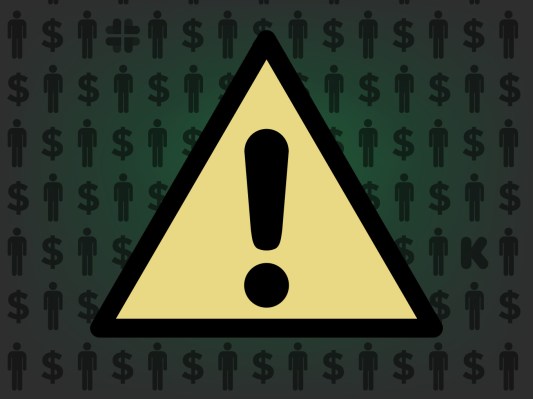Last week, a small crowdfunded project called the Healbe GoBe made news, as backers and journalists questioned the company’s claims that it could measure caloric intake using a wearable device. While the claims do sound wild at best, the company is sticking to its story — and Indiegogo is sticking by the project.
The company behind the medical device has completed Indiegogo’s and PayPal’s fraud investigation, a well-placed source inside the crowdfunding company told TechCrunch. Healbe also satisfied marketing specialist firm MicroArts Creative Agency enough for the firm to take on the product. As far as Indiegogo, PayPal and a well-established marketing firm are concerned, Healbe is a legitimate company.
However, Indiegogo cannot confirm or deny the efficacy of the GoBe. And it doesn’t have to.
So far, almost 2,000 Indiegogo users have pledged close to a million dollars to push the device into production. If legit, the GoBe would be a game changer.
Healbe claims that the GoBe “precisely calculates calorie intake, burn, and metabolic rate during any activity, with no logging, tracking, or guesswork.” Along with counting calories, Healbe says the GoBe measures the wearer’s hydration levels, sleep status, and stress level. Apparently, all this is done through three sensors that measure the body’s so-called “glucose curve,” a term that, when searched for on Google, returns results related to diabetes in dogs and cats.
As with most startups, Healbe conducted internal studies and published its results that validate its claims. Yet, red flags still overshadow the project.
PandoDaily has been on the GoBe’s trail for the last two weeks, citing medical doctors who question the device’s abilities.
To be sure, the project looks fishy. All the patents that the company claims to own are MIA, just patent applications or listed to a former company (like this one). The company previously claimed to have exhibited the device at CES 2014; it didn’t The company did show off the GoBe at CES. The Indiegogo campaign lists the company as based in San Francisco, but the team is based in Moscow and St. Petersberg, a fact not mentioned anywhere on Indiegogo or its website. Its Russian creators are relatively unknown quantities — they, like their product, came out of nowhere.
Even if the product is bunk, since its Indiegogo campaign uses the site’s Flexible Funding option, the company would have received any contribution made towards the campaign — even if it failed to reach its funding goal. This option is what sets Indiegogo apart from its chief rival, Kickstarter, where it requires projects to hit its goal to receive any of the pledged funds.
With the Flexible Funding option, Indiegogo collects 9 percent of the total contributions. With eight days left to go in its campaign, the GoBe could hit a million dollars in contributions. If that happens, Indiegogo stands to earn $70,000.
I talked to Brian Blanchette, president of MicroArts Creative Agency, the firm Healbe tasked with launching the GoBe.
“We would not be working with them if it was a scam,” Brian said. He said that the MicroArts Creative Agency has been around for 25 years and worked with companies such as GE, Lindt, AVG and others to launch their products. Remember the Clio speakers Engadget loved at CES? MicroArts launched that device.
Blanchette said he has seen and used the GoBe. “It works,” he said, explaining that the company, like other startups, only have a very limited number of working prototypes and not enough funding to send a unit to every publication that questions its claims. The company has offices in Moscow and an R&D center in St. Petersberg. Healbe is incorporated in Delaware for tax purposes — like half of the publicly traded companies in the U.S. Blanchette said the company is planning on moving its Moscow offices to the U.S. “to be closer to the consumer,” but the company is currently focusing on shipping the device to Indiegogo backers.
It’s true that some of the devices will not ship to Indiegogo backers until July, a month after advertised, but that shouldn’t be considered anything out of the ordinary for hardware startups, he said. It’s true. It’s a rare feat for crowdfunded hardware to ship as initially advertised.
Bunk or not, what happens if Healbe doesn’t ship the device?
A person close to the matter at Indiegogo tells TechCrunch the company views itself as not responsible if the GoBe or any other device once featured on its site does not ship. The same is true of projects on any crowdfunding platform. In short, the platforms are the medium and whether or not customers trust and fund a project is entirely out of their hands. If Healbe does not ship the GoBe, that’s their problem, not Indiegogo’s.
So who loses if the gamble doesn’t pay off? The customer, primarily, which is why these projects should always carry a healthy dose of caveat emptor. As we enter into a world where cool projects and even companies can easily go the crowdfunding route, the risks are becoming all too apparent. And, perhaps, that’s what makes this interesting.
